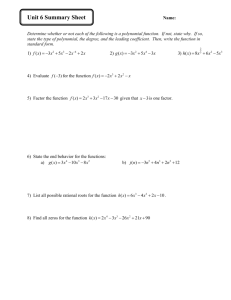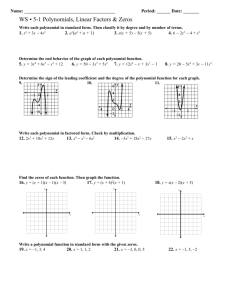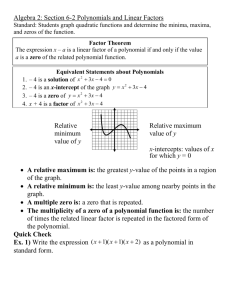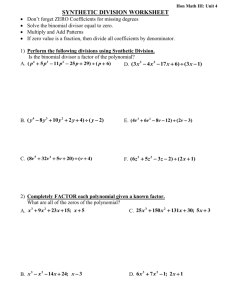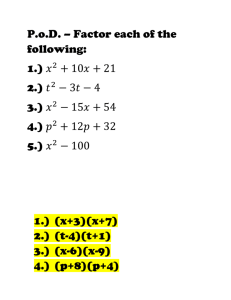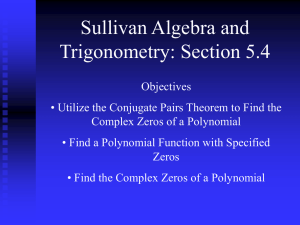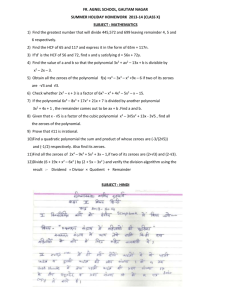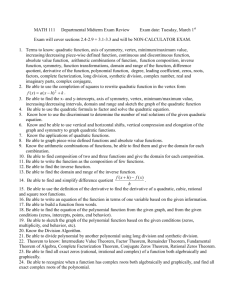The Fundamental Theorem of Arithmetic and
advertisement
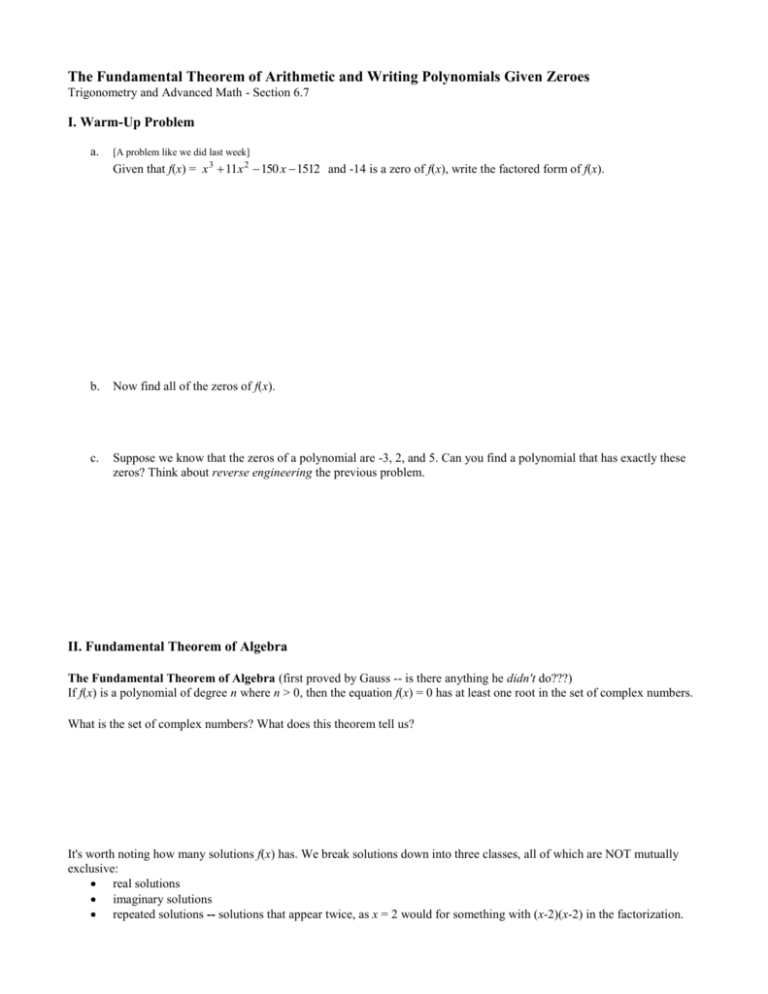
The Fundamental Theorem of Arithmetic and Writing Polynomials Given Zeroes Trigonometry and Advanced Math - Section 6.7 I. Warm-Up Problem a. [A problem like we did last week] Given that f(x) = x 3 11x 2 150 x 1512 and -14 is a zero of f(x), write the factored form of f(x). b. Now find all of the zeros of f(x). c. Suppose we know that the zeros of a polynomial are -3, 2, and 5. Can you find a polynomial that has exactly these zeros? Think about reverse engineering the previous problem. II. Fundamental Theorem of Algebra The Fundamental Theorem of Algebra (first proved by Gauss -- is there anything he didn't do???) If f(x) is a polynomial of degree n where n > 0, then the equation f(x) = 0 has at least one root in the set of complex numbers. What is the set of complex numbers? What does this theorem tell us? It's worth noting how many solutions f(x) has. We break solutions down into three classes, all of which are NOT mutually exclusive: real solutions imaginary solutions repeated solutions -- solutions that appear twice, as x = 2 would for something with (x-2)(x-2) in the factorization. Question: The number of solutions depends on the degree. If we count all repeated solutions such that we count a solution every time it appears, how many solutions does f(x) = 0 have? Problem: Solve x 3 x 2 x 1 0 . How many solutions? What kind? III. Writing a Polynomial Given Zeroes This is our major objective in this section. Question: Suppose we have given that g(x) has zeros a, b, c, and d. How can we use this information to write the polynomial g? Example 1: a. Write a polynomial function f of least degree that has real coefficients, a leading coefficient of 1, and 2 and 1 ± i as zeros. b. Now check that your function does indeed have zeroes at the three points noted in the problem. Example 2: Write a polynomial function that has the zeroes 1, -4, and 5. Check your result. We can also approximate real zeroes graphically using the graphing calculators. Example 3: Use a grapher to approximate the real zeros of . f ( x) x 4 2x 3 x 2 2x 2 We'll now work some problems on 6.7 Practice A Homework: 6.7 (Algebra II Book): #35-45 odd,



